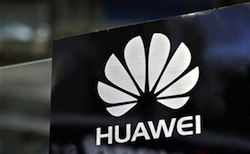In several major moves to support the massive backhaul network needs of operators and ‘Big Data’, Chinese telecoms manufacturer Huawei has launched several key new products, including its latest foray into mobile backhaul with an offering for 4G Long-Term Evolution-based networks and new data centre architecture.
Dubbed ‘LTEHaul’, the new SDN-based mobile backhaul product offers network operators a comprehensive solution to their planning, construction, maintenance and optimisation programmes on the mobile backhaul. The company said that LTEHaul simplified the operation and maintenance (O&M) functions as well as backhaul management on 4G LTE networks.
However, Huawei warned of several major issues that still exist in backhaul networks that operators need to overcome in the roll-out of LTE and LTE-A networks, one of which, that Huawei called a large ‘gap’ that still existed between ‘massive’ LTE hotspots and limited hotspot backhaul sites.
According to the company, its LTEHaul solution could extend existing, legacy backhaul networks ‘downwards’ to form what Huawei calls a ‘ fronthaul’, making it easier for operators to manage and maintain ‘massive’ hotspot backhaul nodes.
By using SDN, Huawei said the network service bearing and control are separated, while far-end massive cell site gateways (CSGs) and small cell site gateways (SCSGs) can be managed on aggregation site gateways (ASGs).
Meanwhile, in a fresh move aimed at big data and the relentless move towards cloud computing in the telecoms space, Huawei launched its new data centre architecture for the cloud.
Its new ‘Distributed Cloud Data Center’ (DC2) is designed for data centre use in the cloud which marks Huawei as the first company vendor in the industry to introduce the technical architecture of DC2, the company said. Huawei added that their new DC2 architecture consolidates multiple dispersed data centre into a new distributed cloud data centre.
According to Huawei, the two major technologies in Huawei’s new DC2 offering are its ‘FusionSphere’, which the company said would ensure the architecture is open, supporting ‘plug-and-play’ of IT devices with different interfaces and with multiple virtual products, while its ‘ManageOne’ offering conducts unified management of dispersed and layered data centres, even with remote branches.
Chen Shijun, general manager of Huawei IT Data Center Solutions said: “As part of Huawei’s efforts to address the challenges that face data centres brought by cloud computing, the new DC2 architecture is able to lower the TCO, increase IT flexibility and boost management efficiency of data centres by optimising resource scheduling and utilisation, effectively supporting customers’ business.”



